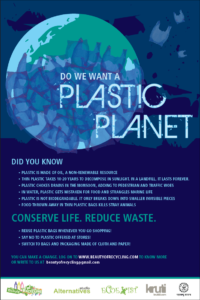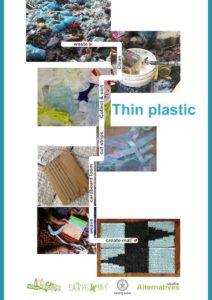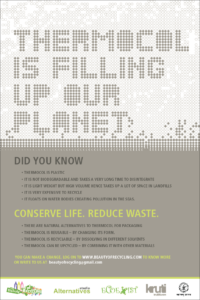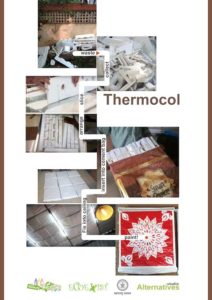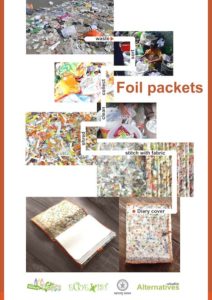-
Green Product Design
The pollution caused by disposable consumer products is generally due to the material they are using which may be non-biodegradable or non-recyclable and also due to the way the product itself has been designed, forcing absolution after a limited number of uses. eCoexist has been working along with product designers to look at the potential offered by waste products and materials to be upcycled into newer reusable products.
We have also been exploring natural fibres and materials such as water hyacinth, coconut coir and rice husk, to either, revive traditional products made of these or design newer products for contemporary needs.
The criteria for the green design we follow insists on Reusability, Value addition and longer life spans. Our focus is on labour intensive, hand made technologies with low investment and infrastructure which are suitable to underprivileged sections of societies so that we may be able to generate livelihoods for them.
-
Cow Dung
Cow dung is a versatile material that is available in plenty to farmers in rural India. While a lot of it gets used as fertilizer in farms, there is often still some available which is a resource. If converted into value added products, this can become a supplemental source of income for villagers. Cow dung is rich in fibre and when dried can be stored for several months. It has fuel value and is traditionally used in cooking stoves. Cow dung is also used as a plaster on walls and on the floor and is known to keep mosquitoes away.
COW DUNG EXPERIMENTS
-
Thin Plastic
Plastic bags made of very thin plastic sheets below 50 microns have been causing havoc in the environment. They have no resale value and therefore do not enter the recycling chain. A bulk of landfills contain this material. Often people reuse them as trash bin liners, throwing wet waste into them, and exarcebating the problem, as the bags get soiled. As part of the Green Idea project we looked at the possibility of weaving mats out of thin plastic.
Weaving mats out of thin plastic bags
Trainings for plastic bag weaving
-
Thermocole
Thermocole or styrofoam waste is voluminous and usually has no resale value as it comes in odd shapes and sizes. Thermocole has insualtive properties and can be used to mae cheap insulation panels for the poor. In a country like India where people live study and work under tin sheds these panels can be life saving in the summers.
Insulation panels from thermocole
-
Mettalised Film
Food packaging uses multi layered plastics which have a layer of metal such as aluminium fused to it. Since these packages contain foods they are oily and again cannot be resold. The reflective properties of mettalised film can be harnessed for its bling value or even to reflect sunlight.
Mettalised film fabrics
-
Packaging waste
Package design is generally focussed on the safety and integrity of the product and is usually considered unnecessary once its function of packaging is fulfilled. The amount of waste generated by packaging has significantly increased in recent times due to retail and home delivery systems. We looked at the waste generated by our own packaging and how it could be reused to make newer products with longer life spans.
-
Natural Clay
Natural clay is a widely available resource in rural India, offering a plethora of uses and opportunities for villagers. It is traditionally utilized in pottery and construction, providing durable and eco-friendly building materials. Clay's natural properties make it an excellent insulator, helping to maintain cooler temperatures in homes. Beyond construction, clay is also used in creating artisanal crafts, which can be sold to generate additional income. With its natural abundance and multiple applications, natural clay stands as a valuable resource for sustainable living and economic enhancement in rural communities.
CERAMIC APPLICATIONS
GREEN BUILDING : POND LINERS
GREEN BUILDING : Construction blocks
GREEN BUILDING : Wattle & Daub
GREEN BUILDING : Construction blocks
-
Plaster of Paris
Plaster of Paris, readily available in rural India, offers numerous applications and income opportunities. Traditionally used in construction and artistic crafts, this versatile material provides both functional and aesthetic value, enhancing the economic prospects of rural communities.
-
Marigold Flowers
Marigold flowers, offer numerous benefits and opportunities. Used in religious ceremonies, for their medicinal properties, and as natural pest repellents, they also enhance gardens and homes. Marigolds can be processed into dyes and beauty products, making them a versatile and economically beneficial resource for rural communities.

